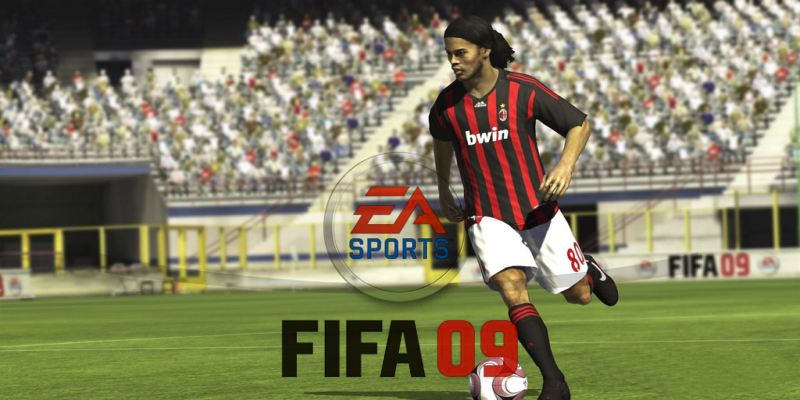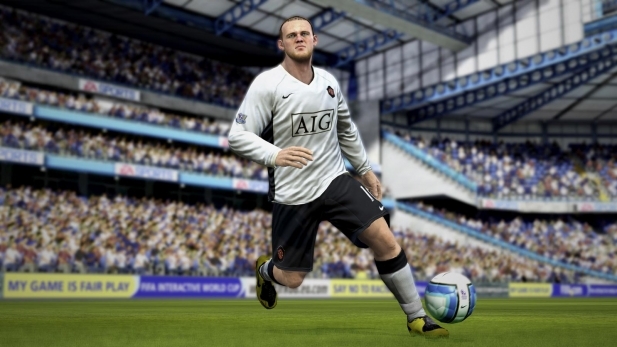

The best though, was Manchester City’s Joleon Lescott scissor-kicking the ball into the back of the net from two inches out – as extravagant as it was pointless. £80 million winger Cristiano Ronaldo backheeling the ball in mid-air for no other reason than to show off, just as he does in real life, was great. Liverpool’s Ryan Babel controlling the ball on his chest before flicking it over his own head was another. Our office matches threw up some slick moves that stuck in the memory – Anelka dragging back the ball and flicking it behind him to pass was one. This has as much to do with the many new animations, the little flicks, tricks and knock-ons that naturally occur as you pass the ball around from certain positions and angles, as it does the fidelity of the graphics. The default in-game camera view provides an astonishingly realistic Sky Sports-esque aesthetic. While the graphics haven’t been given as much attention as other areas, they’re still superb. Instead, you really do have to manoeuvre your opponent’s players out of position, leaving gaps for runners who, when they’re doing their job properly, will call for a pass by raising their hand – a real world technique that doubles as a visual aid in the game. This, combined with the emphasis on the physical side of play, make it much harder to beat players with skill or to latch on to lofted through balls with speed alone, one of the killer FIFA ploys. And sometimes it feels as if players are eased off the ball too frequently, to the point where frustration can set in. But he makes a good point: speed is not as influential as it once was. Tom frequently bemoaned bopping winger Aaron Lennon’s lack of afterburn, especially following a bone-crunching tackle from midfield bruiser Michael Essien. Some tweaks, however, drew the odd complaint during our many office matches. In defence, Manchester United rock Nemanja Vidić barely breaks a sweat when up against the likes of Robinho and Jermain Defoe. Chelsea powerhouse Didier Drogba, for example, has no problem easing all but the strongest defenders off of the ball when chasing a pass down the line. Strong, physical players can easily turf smaller players off the ball. More than any football game I’ve ever played, FIFA 10 is a simulation.įans will also notice that jostling for the ball plays a more prominent role this time around. It feels, at times, as if the left thumb stick is somehow hardwired into your brain. Shooting, if you’re controlling a good player, can often be unnervingly accurate.
#Update fifa 09 full#
Even playing a long ball from one full back to the other sparks a satisfaction that almost borders on the weird. It’s a combination of factors that go into making the current FIFA feel: realistic passing animations, smooth ball physics, convincing shooting.


The 360 dribbling is an addition, remember, to an already superb game of virtual football. Now you’re able to keep the ball in play with skilled thumb control, directing your player away from the defender so that momentum and speed isn’t lost by the “drag”. Before, the eight-way directional control often forced you, frustratingly, over the line, especially when being challenged by another player. Take, for example, sprinting down the wing. With it you’re able to weave out of situations that would have been impossible in previous versions of the game. NOW READ: FIFA 23 is here – and here’s what you need to know about the Ultimate Edition Whatever the reason, it’s here now, and it’s time to rejoice, because it’s brilliant. So easy, in fact, that you might wonder what’s taken EA Canada so long. It does exactly what it says on the tin: with the left analogue stick you’re able to move your player in 360 degrees. You don’t notice it at first, but once you’ve got a few games under your belt it starts to make its presence felt. The one revolutionary gameplay feature is the very first 360 degree dribbling system ever seen in a football video game.


 0 kommentar(er)
0 kommentar(er)
